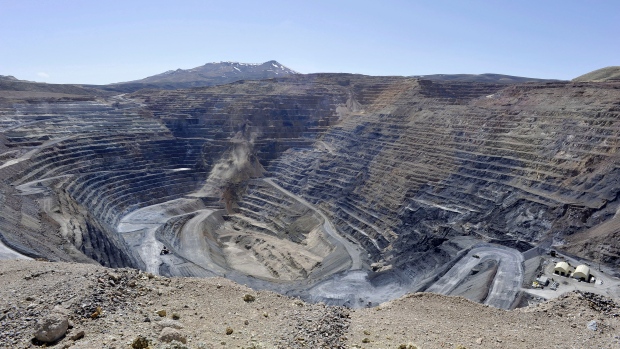Jan 18, 2019
These assets could be up for grabs after mega gold mining mergers
, BNN Bloomberg

Recent M&A activity in the mining sector like Newmont Mining Corp.’s move this week to buy Goldcorp Inc. to form the world’s largest gold miner, and rival Barrick Gold Corp.’s acquisition of Randgold Resources Ltd., have shaken up the lacklustre industry.
As part of the deals, the mining giants have said they will be selling assets — sparking speculation on which mines could be up for grabs, and who would be interested in buying them.
Newmont and Goldcorp. said on Monday the merged company will sell up to US$1.5 billion in assets over the next two years, while Barrick has pledged to focus on cash-generating assets.
Assuming the Newmont-Goldcorp. deal closes pending shareholder and regulatory approvals, Michael Siperco, analyst at Macquarie Capital Markets, told BNN Bloomberg the new company’s total divestment plan could be accounted for solely by Goldcorp. selling its 40 per cent stake in the Pueblo Viejo joint venture to partner Barrick. Barrick already owns 60 per cent of the Dominican Republic mine.
Pierre Lassonde, chairman of Franco-Nevada Corp., added in an email to BNN Bloomberg that Goldcorp. has large capital expenditure “looming” with the Pueblo Viejo mine, which the miner may want to spend on other assets.
However, there are other Goldcorp. assets that could be considered “non-core” to its business, according to Siperco, who says mines in Ontario that are in production could be in high demand.
“There is a scarcity of Canadian production, and recent transactions have been done at premium valuations,” said Siperco. He thinks the Musselwhite, Red Lake, and Porcupine gold mines in the province could be up for grabs.
“Intermediate, senior producers like SSR Mining Inc., Agnico Eagle Mines Ltd., Kinross Gold Corp., Alamos Gold Inc. could all be interested. Perhaps, Kirkland Lake Gold Ltd. and Centerra Gold Inc. as well,” he added.
Barrick mines ‘tied up’
For Barrick, the case for selling assets may not be that simple, according to Siperco, who said most of the company’s mines are tied up in existing partnerships and joint ventures.
“Most of Barrick’s divestments have already been completed, and prior to the Randgold Resources deal, management had indicated a tapering to that process,” Siperco said. “The partners on the assets are the likeliest or only potential acquirers.”
But Lassonde thinks a smaller mine and Barrick’s only one in Canada – Hemlo Mines near Thunder Bay, Ont. – is number one on the list to go, followed by Lagunas Norte in Peru.
“Both of these may only get stink bids as the reclamation liabilities are now to the point where they equal the value left,” Lassonde said.
However, earlier this month, Barrick’s new chief executive Mark Bristow addressed concerns about the miner’s departure from the country and told BNN Bloomberg that the miner needs more assets in Canada.
More consolidation ahead
Market watchers have been calling for consolidation in the sector for years, saying it’s needed to reduce the number of companies competing for fewer assets as they try to maintain or grow production levels.
Siperco thinks Barrick-Randgold and Newmont-Goldcorp deals are just the “first dominos to fall.”
“We anticipate and have anticipated for some time that a significant mergers and acquisitions cycle is coming, and needed as the next step towards improved sector health and investability after the divestments, cost-cutting and debt reduction of the last five years,” Siperco said.
Lassonde agrees there will be consolidation in the sector, but he doesn’t see intermediate miners like Agnico-Eagle or Kinross Gold buying these assets, because the mines are at the higher end of the cost curve and require a lot of work from the buyers.
He added the buyers will either be private equity groups or trade buyers.
“We have too many small companies and there’s not enough capital going around. They all suffer and need change. I see companies like Eldorado Gold Corp., Kinross Gold Corp., Yamana Gold Inc., Iamgold Corp., disappearing over the next two years,” Lassonde said.
“The stronger companies will get stronger and take the lead in the next bull market.”




